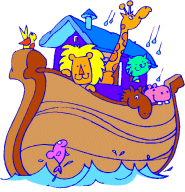
Turtles are reptiles of the Order Testudines (all living turtles belong to the crown group Chelonia), most of whose body is shielded by a special bony or cartilaginous shell developed from their ribs. The Order Testudines includes both extant (living) and extinct species. The earliest known turtles date from 215 million years ago, making turtles one of the oldest reptile groups and a more ancient group than lizards and snakes. About 300 species are alive today, and some are highly endangered. Turtles cannot breathe in water, but they can hold their breath for various periods of time.
Like other reptiles, turtles are poikilothermic (or "of varying temperature"). Like other amniotes (reptiles, dinosaurs, birds, and mammals), they breathe air and do not lay eggs underwater, although many species live in or around water. The largest turtles are aquatic.(From:Wikipedia.org)
What Do Turtles Eat?
What do turtles eat? Some feed mostly on plants while others, like the snapping turtle, actively hunt small creatures for their food. The turtle's diet depends on what kind of a turtle it is and how old it is. While they are babies, turtles are almost completely carnivorous, though they change into omnivores or even herbivores when they get older (depending on the turtle species).
Both aquatic and terrestrial turtles have similar feeding habits, although aquatic turtles seem to keep eating meat even when they are older, whereas terrestrial turtles have a tendency to eat more vegetation. Older turtles eat less meat because they require less protein, therefore, special care must be taken not to overfeed turtles with protein rich food. As for vegetation, turtles like berries, and some leafy vegetables, including lettuce, cabbage, alfalfa, and clover.
For adult turtle as a pet, here are some of the foods you can feed it to keep it healthy :
Protein: There are many sources of protein that are safe to feed turtles: small amounts of cooked fish, turkey or chicken are okay; boiled eggs are okay; mealworms, waxworms, earthworms and silkworms are okay; slugs are fine, as are shrimp, snails and crickets. Don't give them raw meat, though because it can contain a lot of fat and could become contaminated by the time the turtle decides to eat it.
Vegetables: leafy vegetables are best: grape and fig leaves, red clover, carrot tops, dandelions, lettuce (red and green are okay), turnip greens, water lettuce, duckweed, collards, endive and plantain weed are all okay. Regular vegetables like corn, green beans, beets, carrots, okra, green peas and some squash varieties are also okay.
Flowers: some turtles love flowers! Roses, pansies, petunias, lilies, carnations, hibiscus, hyssop, borage, nasturtium and geraniums are all okay as turtle food.
Fruit: some turtles also like fruit: kiwi, apple, mango, strawberry, cantaloupe, blackberries, bananas, grapes, tomatoes, blueberries and some citrus fruits are all a fine to feed a turtle.
Don’t give these food to your turtle :
- Milk or dairy products because their stomachs do not carry the enzymes needed for the breaking down of lactose. Feeding dairy products to your turtle is a good way to make sure it gets very sick.
- Any sort of canned or processed food. These usually have large amounts of salt and preservatives and people don't yet know what these ingredients will do to the digestive system of a turtle.
What do turtles eat from their natural habitats? Some turtles have been known to eat poisonous plants that are a part of their natural habitat—they do this as a way to make themselves inedible by predators. Unfortunately, especially in the case of pet turtles, you won't know exactly what kind of plants are a part of its native habitat, so it is best to keep poisonous plants (like poison ivy, rhubarb plants and avocado plants) out of their reach and out of their tanks.
It is important that you keep a close watch on your turtle's diet, and if you own more than one turtle, make sure they both get to eat equal amounts of food. Turtles are generally messy when they eat, so make sure to keep the water clean and free of debris, as small decomposing particles of flesh can get trapped under rocks and logs and contaminate your turtle's environment.
Make sure to have a water dish in your turtle's terrarium or pen, since it will be a clean source of water from it to drink from, as its swimming water is mostly contaminated with urine and feces.
If you notice your turtle seeming lethargic and having cloudy skin patches, or milky eyes, it may be because of poor nutrition or disease. Make sure you take your turtle to a veterinarian who knows about reptiles to determine whether the animal's diet is too blame, or if there are other factors involved. If you are buying a pet turtle from a store, the pet store will likely have food you can feed it.
Another good practice is to feed your turtle live fish at least once a week, to make sure it gets to exercise. Turtles like to hunt, and it is also great fun to watch them dive in after small fish.



